|
October 1972 Popular Electronics
 Table of Contents Table of Contents
Wax nostalgic about and learn from the history of early electronics. See articles
from
Popular Electronics,
published October 1954 - April 1985. All copyrights are hereby acknowledged.
|
Back in my
electronics technician days I tried to get a job at a couple of the local
hospitals as an on-site equipment maintenance man. That was sometime in the
early 1980s. Then, as now, being a part of the healthcare system is a good way
to assure job security since it is a field that keeps growing with - even
outpacing - population increases. Some of the larger hospitals, similar to
electronics design and manufacturing companies, used to have their own test
equipment repair and calibration departments, but most of that is outsourced
nowadays. This article from an 1972 issue of Popular Electronics
magazine highlighted some of the challenges that promised to make a career as a
medical equipment technician rewarding. You might also be interested in "Medical Electronic Equipment and Hospital Safety"
that appeared in the January 1972 issue of Popular Electronics.
The Medical Electronics Technician
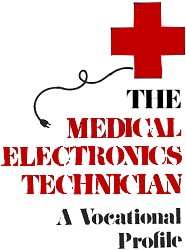 As modern hospitals get more electronic gear,
electronics technicians are needed to take care of it As modern hospitals get more electronic gear,
electronics technicians are needed to take care of it
A Vocational Profile
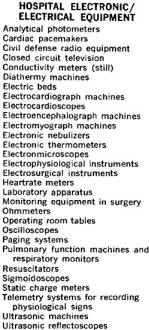 By John H. Holmgren, Assistant Administrator By John H. Holmgren, Assistant Administrator
St. Joseph Hospital, Wichita, Kansas
There is a new member of the hospital staff - one who works behind the scenes
but is playing an ever more important role in the use of modern, complex medical
electronic systems. He is the electronics technician (ET, for short), and his job
covers all of medical electronics front preventive maintenance, emergency repair,
and installation of a wide variety of electronic elements, to keeping up with the
latest developments in this fast-growing field.
His job is not an easy one. Many ET's are on call 24 hours a clay, 7 days a week
(usually via a radio paging system) and they often have to solve a relatively complex
problem in a very short time. As Dale Mason, an ET as St. Joseph Hospital, puts
it, "I am at the hospital during normal working hours, averaging about 15 calls
per day from departments needing electrical or electronic help - either emergency
or routine maintenance. Since my electronic pager reaches out about 30 miles from
the hospital, I take it home with me for emergency contacts." The salary? It can
vary from $10,000 to $12,000 and up, depending on the region and the hospital.
The ET program at St. Joseph has been a success front its initiation. Bernard
Keegan, Director of Material and Plant Services, says, "The electronics technician
was originally hired to maintain the electronic equipment in coronary and intensive
care units. His activities in this area alone have resulted in savings in maintenance
and repair costs over and above his salary. He also does excellent work in inhalation
therapy, the emergency room, physical therapy, and in the laboratory."
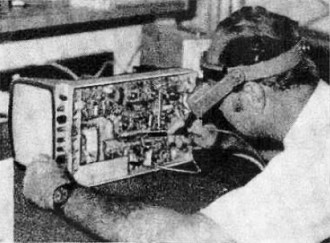
Dale Mason, electronics technician, checks a hospital CCTV monitor
unit.
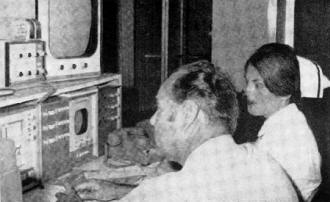
Here, the electronics technician and registered progress nurse
are shown checking a on the remote control board of the coronary care unit at a
large hospital.
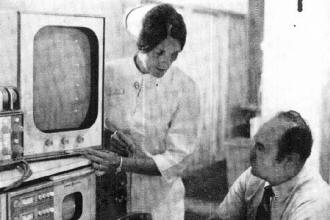
The electronics technician handles many complex monitors such
as this seven-channel cardiac system. He and a registered nurse are shown discussing
operation of device.
Diversified Duties
The electronics technician has many different jobs to perform though they are
centered on the repair and maintenance of all types of electronic equipment. On
many occasions, he must instruct lower-grade maintenance personnel in advancing
their electronics skills; and quite often he helps train nurses, therapists, and
doctors in the technical aspects of the equipment - especially with regard to safety
standards.
Among the items to be repaired and maintained are arrhythmia recorders, ECG amplifiers
and recorders, defibrillators, single, dual, and multichannel scopes, heart-rate
meters, remote heart-rate modules, grounding systems, various types of telemetry
systems, nurse alert systems, and emergency power units. Most of these elements
relate to coronary and intensive care units.
In surgery, there are ultrasonic washers, ground-detection systems, cardiac-monitor
transducers and display consoles, and conductive floor testers. The physical therapy
department has diathermy machines, electronic stimulators, ultrasonic generators,
and traction machines for the ET to take care of. And in the hospital generally,
there are many communications systems, including CB and commercial two-way radio
systems, monitor receivers, paging systems (both r-f and induction), and associated
antennas.
Hospital Electronic/Electrical Equipment
Analytical photometers Cardiac pacemakers Civil defense radio equipment Closed
circuit television Conductivity meters (still) Diathermy machines Electric beds
Electrocardiograph machines Electrocardioscopes Electroencephalograph machines Electromyograph
machines Electronic nebulizers Electronic thermometers Electron microscopes Electrophysiological
instruments Electrosurgical instruments Heartrate meters Laboratory apparatus Monitoring
equipment in surgery Ohmmeters Operating room tables Oscilloscopes Paging systems
Pulmonary function machines and respiratory monitors Resuscitators Sigmoidoscopes
Static charge meters Telemetry systems for recording physiological signs Ultrasonic
machines Ultrasonic reflectoscopes.
There is also quite a bit of TV equipment in most hospitals - aside from that
installed by vendors in patients' rooms. There are closed-circuit systems, both
color and monochrome, monitors, tape recorders, and cable distribution circuits.
There may also be a CCTV patient-bed availability system which includes a number
of large and small video monitors, a control station, a memory generator unit, etc.
And in many cases, the hospital public address and music system comes under the
aegis of the electronics technician.
Besides doing the actual maintenance and repair, the ET may also be called upon
to develop specifications for certain types of electronic gear, coordinate vendor
installed equipment, and check and accept any system after installation.
Training Required
An ET should have vocational training from an approved electronics school (or
equivalent training in the military services) and experience in servicing a diversified
range of electronic equipment - from multi-transistor radio or TV through complex
monitoring or diagnostic machines such as those used in industry. Usually, an ET
has had experience in an industrial or commercial electronics company, has installed
aircraft or marine electronics, or has worked in a military or consumer radio/TV
service shop.
World of the Future
The ET has a wonderful chance to see the world of the future in medical electronics.
For example, the National Heart and Lung Institute is presently contracting for
telemetry devices to be worn by physically active, healthy people on a 24-hour basis
to establish a monitoring or diagnostic measurement procedure for potential cardiacs.
Several companies are developing such systems - and other telemetry gear to keep
an eye on patients up to 1000 ft away from the monitoring console. Such a system,
developed through the experiences of the NASA space programs, uses the very latest
in electronics technology.
The ET may also be called upon to attend technical discussions with leaders in
the industry, covering all types of sophisticated equipment-much of which is the
very latest, both in circuit design and component usage. He may also be involved
in discussions covering intensive care and coronary procedures, becoming an advisor
to hospital management in product review, source selection, and observance of instrument
safety standards.
In general, the ET's capabilities and potential in the modern hospital have just
begun to make an impact, and will become far more important in the years to come
as even more complex electronic equipment (including computers) takes its place
beside the doctor.
Posted October 8, 2019
|









 As modern hospitals get more electronic gear,
electronics technicians are needed to take care of it
As modern hospitals get more electronic gear,
electronics technicians are needed to take care of it




